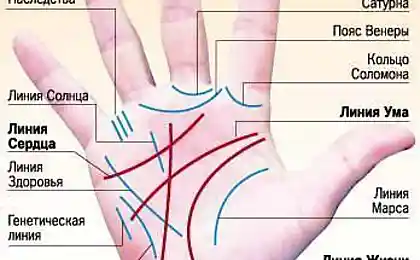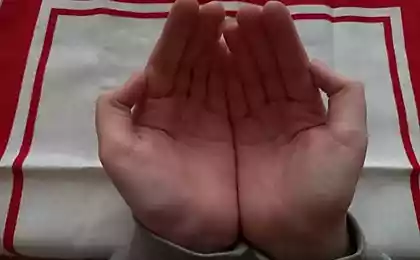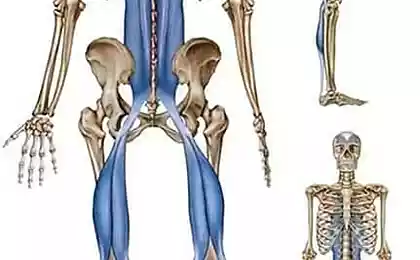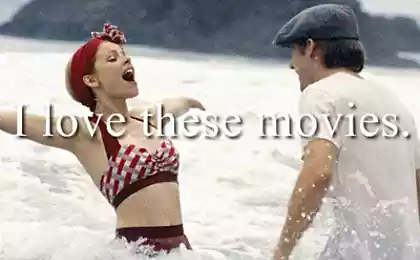931
Toblerone Line
Between Lausanne and Geneva have a very strange ridge of huge concrete blocks. It stretches for fifteen kilometers from Lake Geneva up into the mountains, and at first glance it is very difficult to guess what it is.
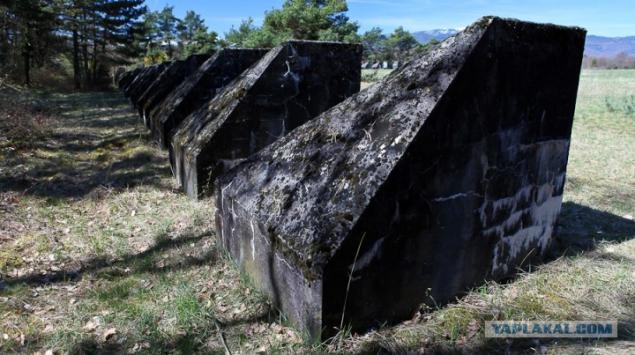
Blocks have a triangular shape, so this structure is often called "Toblerone line," in honor of the eponymous Swiss chocolate.

If you are a tourist, then find this line very difficult. She rarely appears in guidebooks, it is necessary to study it for at least half a day, and other popular destinations in the area very much. With parking too close to the trouble and prepared hiking route starts at about a half-hour walk from the first stone blocks.
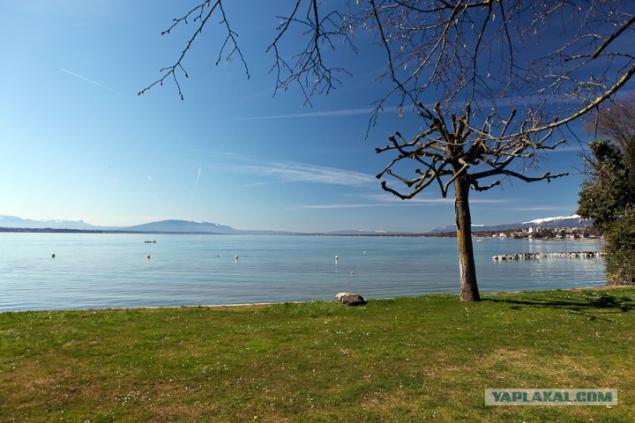
And until recently, about this line generally knew only local. Tourists slipped past her, so no hiking trails was not organized. Only the local peasants plowing virgin soil near incomprehensible stones, but fat Swiss cows grazed.

Only more recently found enthusiast Gerald Berutti, who created an association for the preservation of the "line of Toblerone" and arranged along this tourist route on foot. So where did it come from?

When in 1940 Nazi Germany invaded France, Switzerland was completely surrounded by countries fascist axis. Back in the 1930s, Switzerland has a very strong ideological resistance to the Nazi ideology (the so-called "spiritual defense") - it was broadcasting only the German-speaking anti-fascist radio, and the National Socialist Party did not enjoy great public support.
But when France fell, the Swiss understood that it was time to move from the simple to the armed neutrality, and only the fourth time in the history of the country's National Assembly elected General. "General" in Switzerland - a special military office, elected only in times of war, something like a supreme commander. They became Henri Guisan, who was to become a national hero.

July 20, 1940 Guisan delivered a historic speech before the officers of the Swiss army. In it, he clearly said that, if attacked, Switzerland will fight to the last, and even if the bullets run out, the move should go bayonets. He knew that if they wanted a Swiss army size is not comparable with the German, so the main task is to create conditions under which the Germans would be extremely disadvantageous to attack this small mountainous country.
Adopted a plan of "national redoubt" in which the army is fully mobilize all infrastructure mined, and the perimeter of the country created several lines of fortifications, the purpose of which is the maximum containment of the enemy. In the course of promoting the enemy's army will retreat into the mountains, and the infrastructure is completely destroyed. In the future, the resistance is carried out semi-guerrilla troops in rugged mountainous terrain.
Finally, the most famous was the Order of Henry Guise order to consider any reports of surrender coming from all government agencies, a provocation.
"Toblerone Line" was one of those lines, and it was built to the east of Geneva, because the city on all sides was surrounded by occupied France. That is Geneva were ready to give up without a fight. Initially it was called "line Promenthaus" after one of the three rivers, along which it stands, and along its perimeter twelve fortresses were built, which was anti-tank artillery.
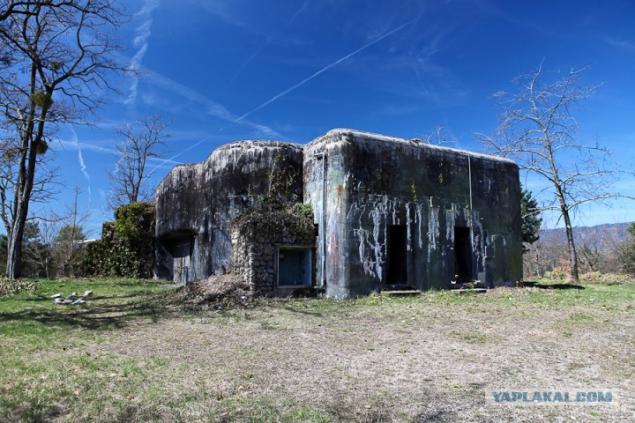
It is interesting that the line should pass through privately owned, and even if the military situation in the Swiss private property is inviolable. One of the owners of local land descendant of Napoleon Bonaparte, Prince Louis Napoleon, gave their land for free, and later became one of the brightest members of the French Resistance. But with the pianist and former President Ignacy Paderewski had to negotiate for several months. Property in Switzerland remained the only one he has left after the invasion of Poland by Germany, in exchange for her Swiss authorities helped him pereprvitsya in the United States, where he headed the Polish government-in-exile.
Line even go into the lake 50 meters to repel a possible attack from the water.

It most about 2,700 concrete blocks, each weighing nine tons. The party turned to the side of attack, cut down at an angle to the tank and drove it "hung».
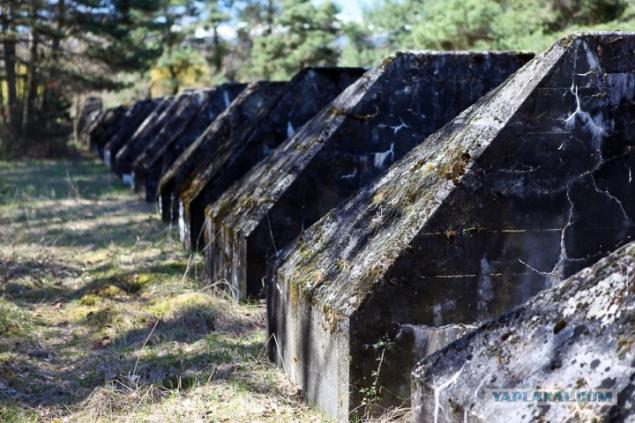
...

Blocks and strengthening are clearly along the natural obstacles - the mountain river.
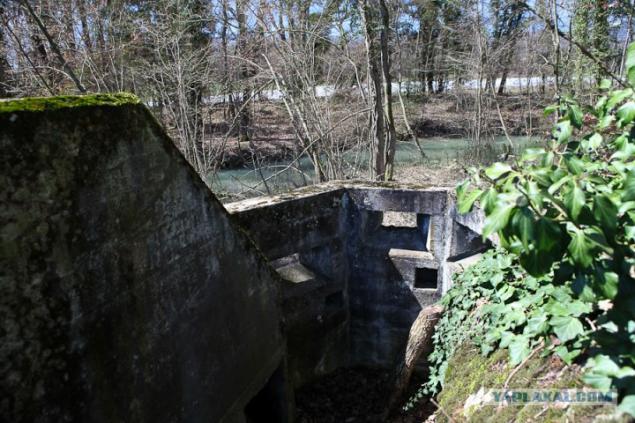
And on the other side - perfect sweep the field.

Now some of these fields is one of the most famous European golf clubs.

The most famous fortress - "Pink House» (Villa Rose), kept in readiness until very recently. At first glance - a normal house, standing in the shade of the trees along the regional road.

For many years, motorists have wondered why the house always looks neat, painted, but it never is a light ...

... Well worth a closer look - you know that the window he painted.

In the 1940s, the house was kept a platoon of soldiers, ready to attack. Alarm "door" open, and behind them is somewhat anti-tank guns, hidden behind thick walls two and a half meters.

That is so cute, he looks the part of blocks.
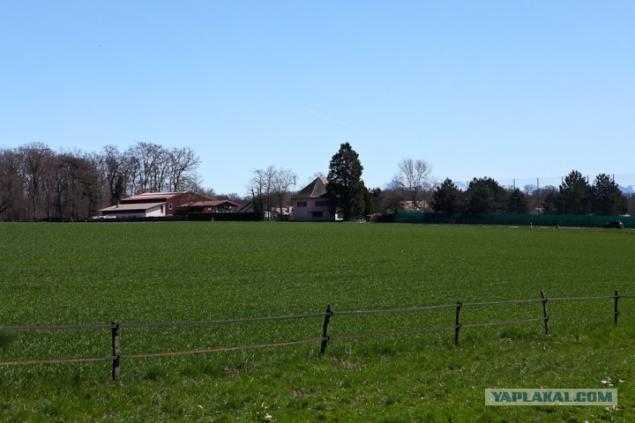
Fortifications were provided on the line itself.

...

The blocks have long been covered with moss and are home to a large number of local forest dwellers. It was another reason to keep them safe and to make a number of hiking route.
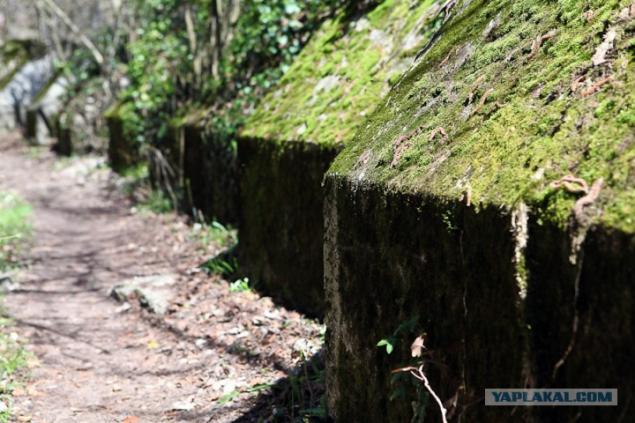
...

What is this yet another farmhouse in the open field?

That's right - another gun position with painted windows.

Very unusual and quiet place. Honestly, I never expected to find anything like that in Switzerland.

I was only about one-third of the route, and did not climb up high. They say there is even more interesting, there are all sorts of bridges over the river and plenty of wildlife. But for the first time, and so I had the experience.
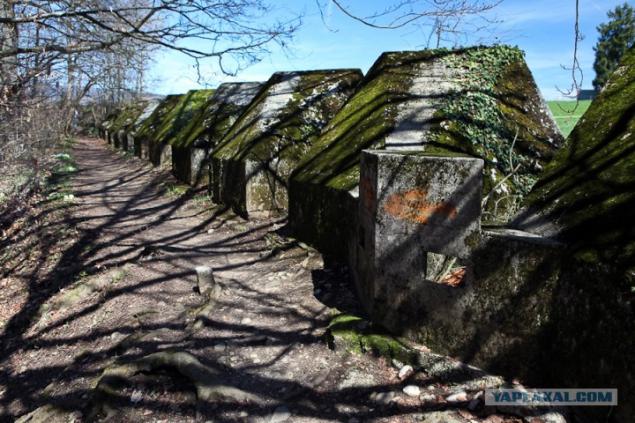
So, what does all this end? Germany in the end and did not attack Switzerland, while in 1940 there were several collisions in the air with losses on both sides. Hitler thought that the conquest of the country, and so that does not threaten to cost too much, and prefer to conclude with Switzerland dorovor. Now, many criticized Switzerland for this, because they allow the transit of German goods through its territory and maintained economic relations with Germany, in exchange for sovereignty. But, anyway, the country and the people were saved, and Henry Street Giza is now in every Swiss city.

P.S. And in Lausanne already in full spring unfolds.
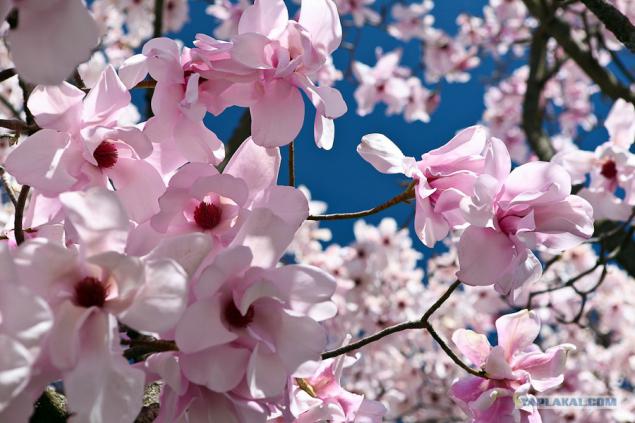
And even pedal boats on the lake started.
Posted in [mergetime] 1366022812 [/ mergetime]
I have everything here: skitalets.livejournal.com/88324.html
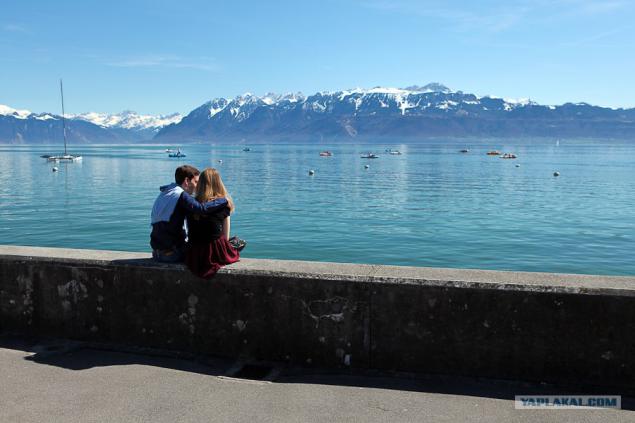
Source:

Blocks have a triangular shape, so this structure is often called "Toblerone line," in honor of the eponymous Swiss chocolate.

If you are a tourist, then find this line very difficult. She rarely appears in guidebooks, it is necessary to study it for at least half a day, and other popular destinations in the area very much. With parking too close to the trouble and prepared hiking route starts at about a half-hour walk from the first stone blocks.

And until recently, about this line generally knew only local. Tourists slipped past her, so no hiking trails was not organized. Only the local peasants plowing virgin soil near incomprehensible stones, but fat Swiss cows grazed.

Only more recently found enthusiast Gerald Berutti, who created an association for the preservation of the "line of Toblerone" and arranged along this tourist route on foot. So where did it come from?

When in 1940 Nazi Germany invaded France, Switzerland was completely surrounded by countries fascist axis. Back in the 1930s, Switzerland has a very strong ideological resistance to the Nazi ideology (the so-called "spiritual defense") - it was broadcasting only the German-speaking anti-fascist radio, and the National Socialist Party did not enjoy great public support.
But when France fell, the Swiss understood that it was time to move from the simple to the armed neutrality, and only the fourth time in the history of the country's National Assembly elected General. "General" in Switzerland - a special military office, elected only in times of war, something like a supreme commander. They became Henri Guisan, who was to become a national hero.

July 20, 1940 Guisan delivered a historic speech before the officers of the Swiss army. In it, he clearly said that, if attacked, Switzerland will fight to the last, and even if the bullets run out, the move should go bayonets. He knew that if they wanted a Swiss army size is not comparable with the German, so the main task is to create conditions under which the Germans would be extremely disadvantageous to attack this small mountainous country.
Adopted a plan of "national redoubt" in which the army is fully mobilize all infrastructure mined, and the perimeter of the country created several lines of fortifications, the purpose of which is the maximum containment of the enemy. In the course of promoting the enemy's army will retreat into the mountains, and the infrastructure is completely destroyed. In the future, the resistance is carried out semi-guerrilla troops in rugged mountainous terrain.
Finally, the most famous was the Order of Henry Guise order to consider any reports of surrender coming from all government agencies, a provocation.
"Toblerone Line" was one of those lines, and it was built to the east of Geneva, because the city on all sides was surrounded by occupied France. That is Geneva were ready to give up without a fight. Initially it was called "line Promenthaus" after one of the three rivers, along which it stands, and along its perimeter twelve fortresses were built, which was anti-tank artillery.

It is interesting that the line should pass through privately owned, and even if the military situation in the Swiss private property is inviolable. One of the owners of local land descendant of Napoleon Bonaparte, Prince Louis Napoleon, gave their land for free, and later became one of the brightest members of the French Resistance. But with the pianist and former President Ignacy Paderewski had to negotiate for several months. Property in Switzerland remained the only one he has left after the invasion of Poland by Germany, in exchange for her Swiss authorities helped him pereprvitsya in the United States, where he headed the Polish government-in-exile.
Line even go into the lake 50 meters to repel a possible attack from the water.

It most about 2,700 concrete blocks, each weighing nine tons. The party turned to the side of attack, cut down at an angle to the tank and drove it "hung».

...

Blocks and strengthening are clearly along the natural obstacles - the mountain river.

And on the other side - perfect sweep the field.

Now some of these fields is one of the most famous European golf clubs.

The most famous fortress - "Pink House» (Villa Rose), kept in readiness until very recently. At first glance - a normal house, standing in the shade of the trees along the regional road.

For many years, motorists have wondered why the house always looks neat, painted, but it never is a light ...

... Well worth a closer look - you know that the window he painted.

In the 1940s, the house was kept a platoon of soldiers, ready to attack. Alarm "door" open, and behind them is somewhat anti-tank guns, hidden behind thick walls two and a half meters.

That is so cute, he looks the part of blocks.

Fortifications were provided on the line itself.

...

The blocks have long been covered with moss and are home to a large number of local forest dwellers. It was another reason to keep them safe and to make a number of hiking route.

...

What is this yet another farmhouse in the open field?

That's right - another gun position with painted windows.

Very unusual and quiet place. Honestly, I never expected to find anything like that in Switzerland.

I was only about one-third of the route, and did not climb up high. They say there is even more interesting, there are all sorts of bridges over the river and plenty of wildlife. But for the first time, and so I had the experience.

So, what does all this end? Germany in the end and did not attack Switzerland, while in 1940 there were several collisions in the air with losses on both sides. Hitler thought that the conquest of the country, and so that does not threaten to cost too much, and prefer to conclude with Switzerland dorovor. Now, many criticized Switzerland for this, because they allow the transit of German goods through its territory and maintained economic relations with Germany, in exchange for sovereignty. But, anyway, the country and the people were saved, and Henry Street Giza is now in every Swiss city.

P.S. And in Lausanne already in full spring unfolds.

And even pedal boats on the lake started.
Posted in [mergetime] 1366022812 [/ mergetime]
I have everything here: skitalets.livejournal.com/88324.html

Source:
